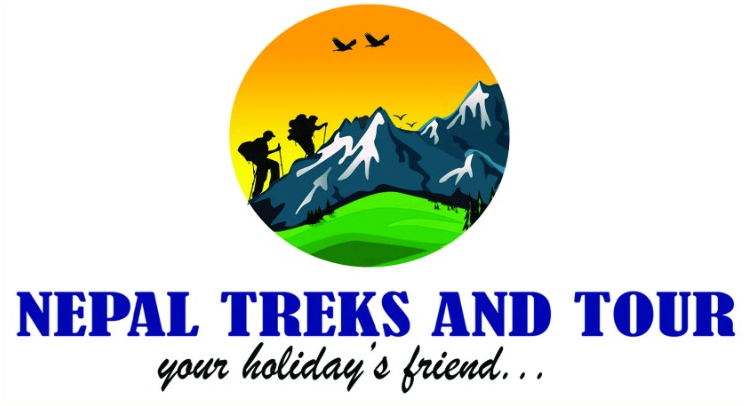Nepal is home to some of the most spectacular mountains on Earth, with over 1,300 peaks above 6,000 meters, many of which are officially open for climbing. These 6000-meter peaks in Nepal serve as the perfect stepping stones for mountaineers aiming to progress from trekking adventures to higher Himalayan expeditions. Whether you are a beginner seeking your first summit or an experienced climber preparing for a technical ascent, the 6,000m peaks of Nepal offer the ideal challenge, breathtaking scenery, and unforgettable Himalayan experience.
Why Climb 6000 Meter Peaks in Nepal?
Climbing a 6000m peak in Nepal is one of the best ways to experience the thrill of Himalayan mountaineering without venturing into the extreme altitudes of the 7000m or 8000m expeditions. These peaks are considered “trekking peaks”, meaning they combine trekking and climbing, allowing climbers to experience both high-altitude trekking and technical alpine ascents.
Here’s why these peaks are ideal for adventure seekers:
- Perfect for beginner and intermediate climbers.
- Stunning views of the world’s highest mountains, including Everest, Lhotse, Makalu, Cho Oyu, and Annapurna.
- Opportunity to learn and practice essential climbing techniques like rope work, cramponing, and ice-axe handling.
- Affordable and shorter than major expeditions, usually ranging from 15 to 20 days.
- Authorized and regulated by the Nepal Mountaineering Association (NMA), ensuring safety and sustainability.
List of Popular 6000 Meter Peaks in Nepal
Below is a detailed look at some of the best and most popular peaks above 6000 meters open for climbing in Nepal.
Island Peak (Imja Tse) – 6,189m
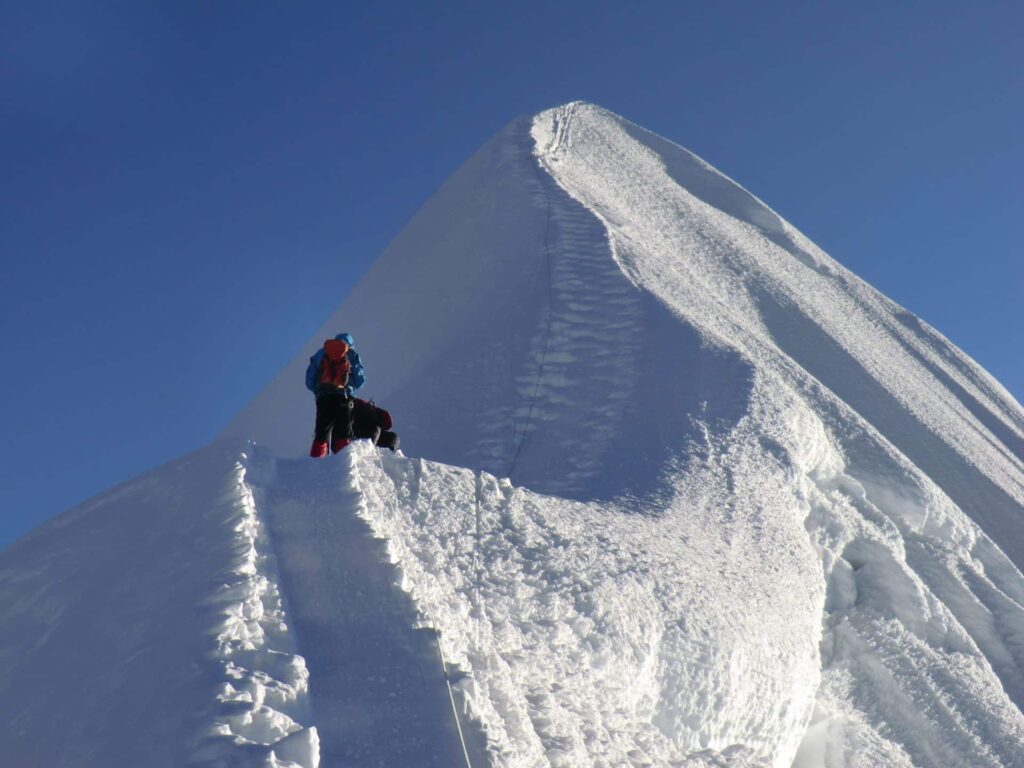
- Region: Everest (Khumbu)
- Difficulty Level: Moderate
- Climbing Duration: 17–20 days
- Permit: NMA Group “B”
- Best Season: Spring (Mar–May) and Autumn (Sep–Nov)
- Highlights: Island Peak is one of the most climbed trekking peaks in Nepal, located near Chhukung Valley. The climb offers stunning views of Lhotse, Nuptse, and Ama Dablam. It is perfect for beginners looking to gain their first Himalayan summit experience.
Mera Peak – 6,476m
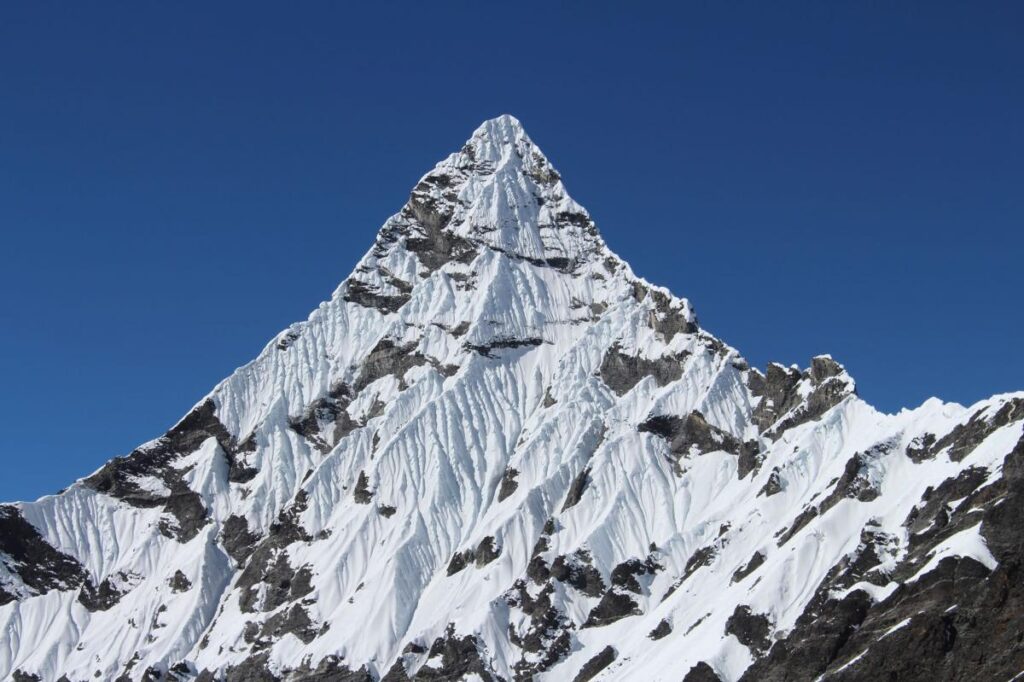
- Region: Hinku Valley, Everest Region
- Difficulty: Moderate
- Climbing Duration: 18–22 days
- Permit: NMA Group “B”
- Highlights: Known as the highest trekking peak in Nepal, Mera Peak offers an extraordinary 360-degree view of five of the world’s tallest mountains—Everest, Lhotse, Makalu, Cho Oyu, and Kanchenjunga. It’s ideal for trekkers wanting high altitude experience without extreme technical difficulty.
Lobuche East Peak – 6,119m
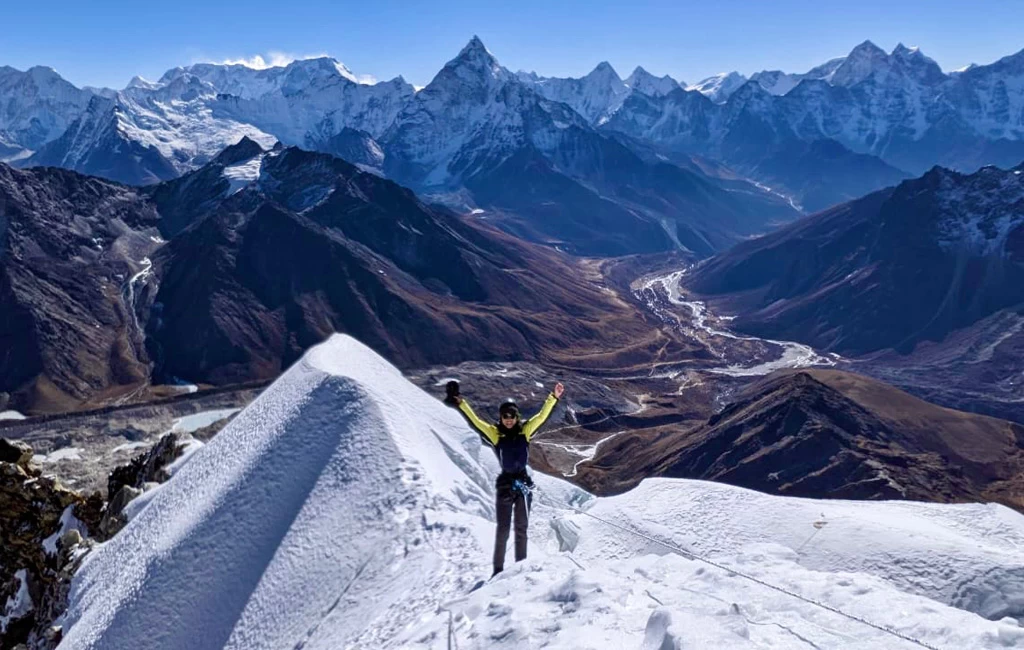
- Region: Everest (Khumbu)
- Difficulty: Moderate to Technical
- Climbing Duration: 16–19 days
- Permit: NMA Group “B”
- Highlights: Lobuche East is more challenging than Island or Mera Peak, making it suitable for climbers with previous experience. The summit ridge provides one of the most scenic views of Everest Base Camp and Khumbu Glacier.
Pisang Peak – 6,091m
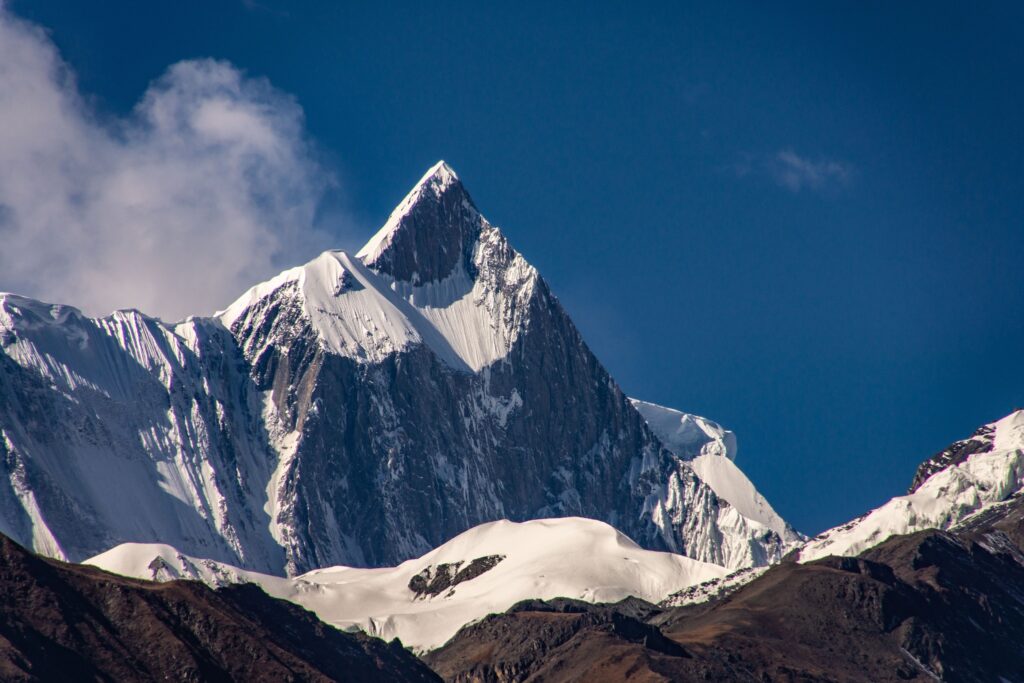
- Region: Annapurna
- Difficulty: Moderate
- Climbing Duration: 16–18 days
- Permit: NMA Group “B”
- Highlights: A beautiful pyramid-shaped peak rising above Pisang village, ideal for trekkers completing the Annapurna Circuit. Pisang Peak offers stunning panoramic views of the Annapurna and Manaslu ranges.
Chulu West Peak – 6,419m

- Region: Annapurna
- Difficulty: Moderate to Challenging
- Climbing Duration: 18–21 days
- Permit: NMA Group “A”
- Highlights: One of the best peaks to climb in Nepal for those seeking adventure in the Annapurna region. The summit provides spectacular views of the Annapurna and Dhaulagiri massifs.
Chulu East Peak – 6,584m
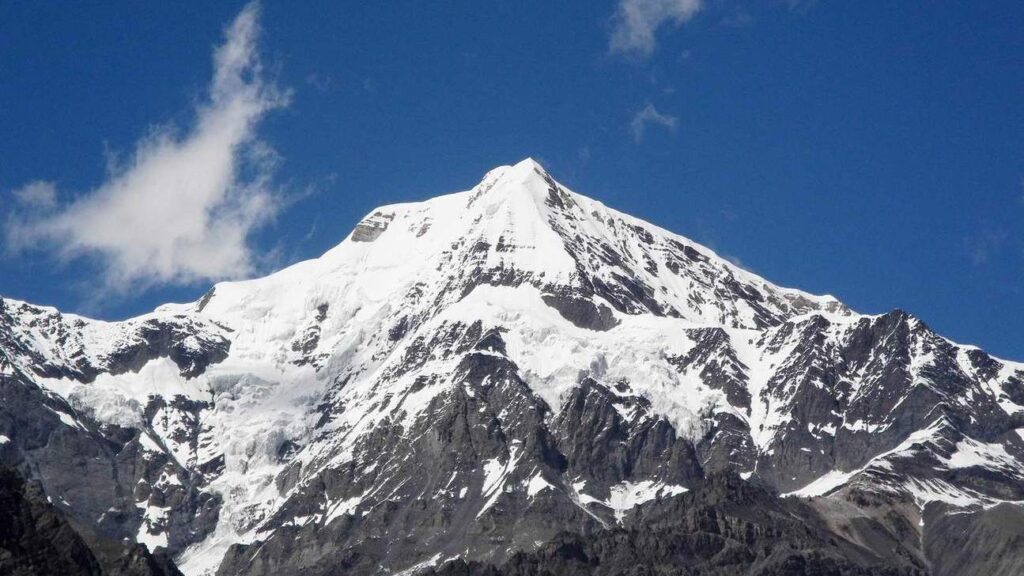
- Region: Annapurna
- Difficulty: Moderate
- Permit: NMA Group “B”
- Highlights: A sister peak of Chulu West, this climb combines high adventure with breathtaking Himalayan landscapes, ideal for climbers who want a balance between challenge and scenery.
Dhampus Peak (Thapa Peak) – 6,012m
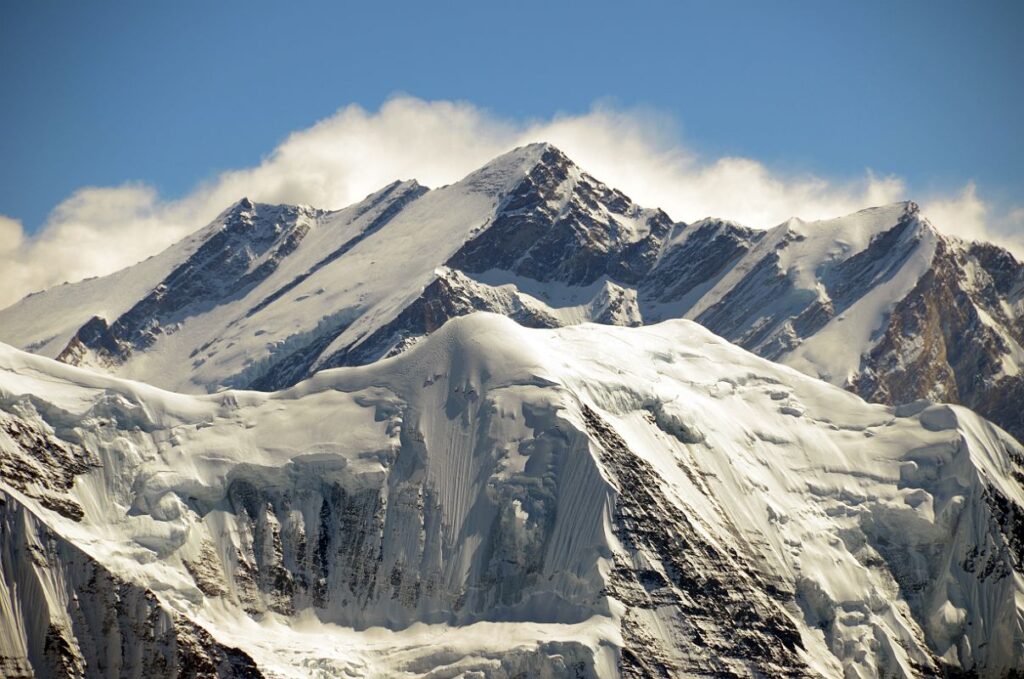
- Region: Dhaulagiri
- Difficulty: Moderate
- Permit: NMA Group “B”
- Highlights: Non-technical and relatively easier, Dhampus Peak is perfect for beginners seeking a less-crowded Himalayan climb.
Pharchamo Peak – 6,187m
- Region: Rolwaling
- Difficulty: Moderate to Technical
- Permit: NMA Group “B”
- Highlights: A magnificent snow peak standing at the head of the Tashi Lapcha Pass. Ideal for those who want a remote and less commercial climbing experience.
Kyajo Ri Peak – 6,186m
- Region: Everest (Khumbu)
- Difficulty: Technical
- Permit: NMA Group “A”
- Highlights: A challenging peak requiring solid mountaineering skills. Offers a fantastic alpine climb with stunning views of the Khumbu range.
Singu Chuli Peak (Fluted Peak) – 6,501m
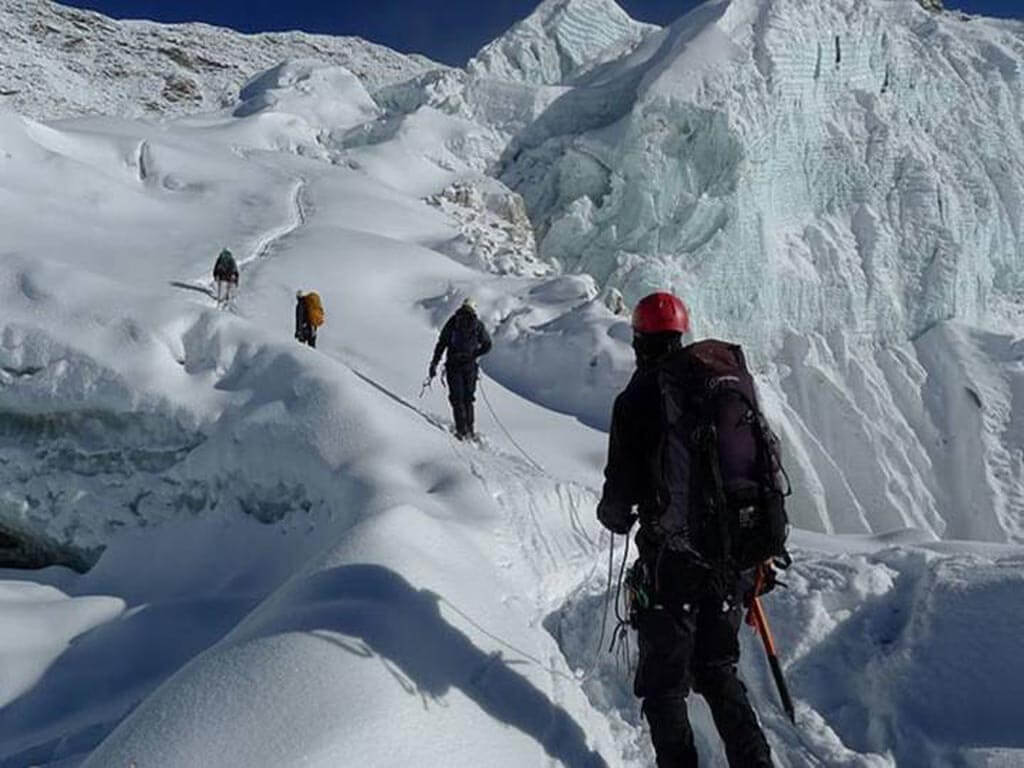
- Region: Annapurna Sanctuary
- Difficulty: Technical
- Permit: NMA Group “A”
- Highlights: Also known as the Fluted Peak, this is one of the most technical climbing peaks in Nepal. It is an excellent climb for experienced climbers who want to test their ice and rock skills in the Annapurna region.
Permits and Regulations for 6000m Peaks in Nepal
All trekking peaks under 7,000 meters require a climbing permit issued by the Nepal Mountaineering Association (NMA). Peaks are categorized into:
- Group “A” Peaks: More technical and challenging (e.g., Singu Chuli, Chulu West, Kyajo Ri)
- Group “B” Peaks: Moderate trekking peaks suitable for beginners (e.g., Island, Mera, Pisang, Dhampus)
Other required documents include:
- TIMS Card (Trekkers’ Information Management System)
- National Park/Conservation Area Entry Permits
- Licensed Climbing Guide and Porters (mandatory for safety)
Best Season for Climbing 6000m Peaks in Nepal
Climbing a 6000-meter peak in Nepal requires not only physical preparation and technical skill but also perfect timing. The weather and seasonal conditions play a crucial role in ensuring both safety and success. Nepal’s Himalayan climate is dominated by four distinct seasons, but only two — spring and autumn — offer stable weather, clear skies, and ideal climbing conditions for Nepal Peak Climbing adventures.
Spring Season (March to May) – The Prime Climbing Season
Spring is widely regarded as the best time for climbing 6000m peaks in Nepal. The weather is stable, temperatures are moderate, and the mountain views are spectacular. As the snow from winter melts, the climbing routes become more accessible and safer for mountaineers.
Why Spring is Ideal
- Stable weather and predictable conditions.
- Excellent visibility with clear blue skies.
- Firm snow and ice conditions, perfect for technical climbing.
- Blooming rhododendron forests add beauty to lower trails.
- High success rate for both trekking and climbing expeditions.
Best Peaks to Climb in Spring
- Island Peak (6,189m) – Ideal temperatures and perfect ice conditions.
- Mera Peak (6,476m) – Clear views of Everest, Lhotse, and Makalu.
- Lobuche East (6,119m) – Firm snow bridges and easier crevasse crossings.
- Chulu West (6,419m) – Dry and clear mountain weather.
Average Temperature
- Daytime: 10°C to 20°C (in trekking zones)
- At higher altitudes: -10°C to -20°C near the summit
Spring is also the season when expedition teams attempt 7000m and 8000m peaks, creating a vibrant mountaineering atmosphere across the Himalayas.
Autumn Season (September to November) – The Clear and Calm Period
Autumn is another prime climbing season in Nepal, following the monsoon rains. The air becomes clean and crisp, offering some of the clearest mountain views of the year. Temperatures are cooler than spring but still comfortable for trekking and climbing.
Why Autumn is Perfect
- Post-monsoon clarity — exceptional visibility.
- Minimal wind and low precipitation at high altitudes.
- Ideal snow and ice firmness on climbing routes.
- Less crowded compared to the spring season.
- High summit success rates due to stable weather.
Best Peaks to Climb in Autumn
- Pharchamo Peak (6,187m) – Excellent snow conditions in Rolwaling.
- Pisang Peak (6,091m) – Clear trails and dry terrain.
- Singu Chuli (6,501m) – Cold but stable alpine weather, ideal for technical ascents.
- Kyajo Ri (6,186m) – Less risk of avalanches and high visibility.
Average Temperature
- Daytime: 8°C to 18°C
- High altitudes: -15°C to -25°C near the summit
Autumn also offers the best chance for photography, cultural interaction, and unobstructed views of the Himalayan range.
Monsoon Season (June to August) – Not Recommended
Monsoon brings heavy rainfall, slippery trails, and limited visibility. Climbing is risky due to avalanches, rockfalls, and leech-infested lower trails. However, some rain-shadow regions like Upper Mustang and Dolpo remain accessible for trekking.
- Frequent landslides and unpredictable weather.
- Poor visibility and increased risk of altitude sickness.
- Wet gear and logistical challenges.
Winter Season (December to February) – Challenging and Cold
Winter is the off-season for climbing 6000m peaks, but it’s still possible for experienced climbers seeking solitude. The temperatures can drop drastically, and heavy snowfall makes certain routes inaccessible.
- Advantages: Less crowded, crystal-clear skies, quiet mountains.
- Disadvantages: Extreme cold, deep snow, and high wind speed.
- Suitable For: Lower-altitude trekking or winter training climbs with proper gear.
Seasonal Summary Table
| Season | Months | Weather | Visibility | Recommended Peaks | Remarks |
|---|---|---|---|---|---|
| Spring | Mar–May | Stable, mild | Excellent | Island, Mera, Lobuche, Chulu | Best overall season |
| Autumn | Sep–Nov | Dry, cool | Crystal clear | Pharchamo, Pisang, Singu Chuli | Ideal post-monsoon clarity |
| Monsoon | Jun–Aug | Wet, unstable | Poor | Upper Mustang (limited) | Not recommended |
| Winter | Dec–Feb | Cold, snowy | Clear but harsh | Short climbs only | Only for experts |
Expert Recommendation
If your goal is successfully summiting a 6000m peak while enjoying the best of Nepal’s mountain scenery, plan your climb during:
- Spring (March–May) for stable snow and high success rate.
- Autumn (September–November) for clear skies and serene mountain views.
Both seasons provide optimal conditions for safe ascents and unforgettable Himalayan experiences — ensuring your Nepal Peak Climbing adventure is as rewarding as it is successful.
Essential Gear and Preparation for Climbing 6000m Peaks in Nepal
Climbing a 6000-meter peak in Nepal is one of the most rewarding adventures in the Himalayas — but success depends heavily on proper preparation and the right gear. The combination of unpredictable weather, high altitude, and technical terrain demands careful planning, quality equipment, and mental readiness.
Whether you’re heading for Island Peak, Mera Peak, Lobuche East, or Singu Chuli, your gear and preparation strategy will define your comfort, safety, and summit success.
Understanding the Challenge
A 6000m Himalayan climb sits between trekking and full-scale mountaineering. While most peaks are classified as “trekking peaks,” the upper sections often involve steep snow slopes, crevasse crossings, and glacier travel.
Hence, climbers should be:
- Physically fit and well-acclimatized.
- Familiar with using mountaineering equipment (ice axe, crampons, harness).
- Equipped with proper clothing layers to withstand -20°C to -25°C.
- Mentally prepared for long summit days and high-altitude conditions.
Essential Gear Checklist for 6000m Peaks in Nepal
Your climbing equipment can be divided into several key categories: clothing, mountaineering gear, camping equipment, personal items, and documents.
Below is a detailed list used by professional climbing teams and approved by leading Himalayan operators such as Nepal Treks and tour:
Clothing and Layering System
Layering is crucial for regulating body temperature and staying dry in rapidly changing mountain weather.
Base Layers (Inner Layer):
- Thermal tops and bottoms (moisture-wicking, quick-dry)
- Sports underwear and liner socks
Insulating Layers (Mid Layer):
- Fleece jacket or soft-shell jacket
- Down jacket (-20°C or below rated)
- Insulated trekking pants
Outer Layers (Shell Layer):
- Waterproof and windproof jacket (Gore-Tex or similar)
- Waterproof pants
- Lightweight down or synthetic vest (optional)
Head & Hands:
- Warm hat/beanie
- Balaclava or buff
- Glacier sunglasses (UV 400 protection)
- Liner gloves and insulated mittens
Footwear:
- Double mountaineering boots (e.g., La Sportiva G2, Scarpa Phantom)
- Trekking boots (for approach days)
- Gaiters (for snow)
- Thermal socks (2–3 pairs)
Climbing Equipment
These are the technical essentials required for safe climbing above the snowline.
- Climbing harness
- Helmet (UIAA-approved)
- Crampons (compatible with climbing boots)
- Ice axe (standard mountaineering type)
- Carabiners (locking and non-locking)
- Belay/rappel device
- Jumar (ascender)
- Sling and prusik cords
- Rope (usually provided by the climbing guide)
- Trekking poles
Note: For most 6000m peaks, your trekking or climbing agency (like Nepal Treks and Tour) provides fixed ropes, tents, and common climbing gear. You only need to carry personal essentials.
Camping & Sleeping Equipment
Even though climbing peaks are supported by trekking staff, personal comfort is essential for rest and recovery.
- Sleeping bag rated to -20°C or below
- Sleeping liner (for hygiene and extra warmth)
- Inflatable or foam sleeping mat
- Personal tent
- Headlamp with extra batteries
Personal Accessories
- Refillable water bottles and a thermos
- Water purification tablets or a filter
- Sunscreen (SPF 50+), lip balm
- Toiletries (biodegradable soap, wet wipes, toothbrush)
- Quick-dry towel
- Power bank or solar charger
- Snacks and energy bars
- Lightweight book or journal for downtime
Documents and Permits
Always carry:
- Passport and Nepal visa
- Peak climbing permit (issued by NMA)
- TIMS Card (Trekkers’ Information Management System)
- National park/conservation entry permits
- Travel insurance certificate covering high-altitude rescue and medical evacuation
Pre-Climb Preparation and Training
Physical preparation is equally important as equipment. You should begin training 8–12 weeks before your climb. A balanced plan includes:
Cardiovascular Training:
- Running, cycling, swimming, or hiking (3–4 times per week)
- Target endurance to sustain 5–6 hours of trekking per day
Strength Training:
-
Focus on legs, core, and shoulders — squats, lunges, planks, and step-ups
Altitude Simulation:
-
If possible, hike at higher elevations or use a stair climber with a loaded backpack (10–12 kg)
Technical Training:
- Learn how to use crampons, harnesses, and ice axes in controlled conditions
Mental and Logistical Preparation
Climbing a 6000m peak is as much mental as physical.
Here’s how to prepare beyond the gear list:
- Be patient with weather delays — mountain conditions can change fast.
- Follow acclimatization schedules; never rush ascent.
- Respect your guide’s instructions during rope and ladder crossings.
- Stay hydrated and eat well — nutrition directly impacts your stamina.
- Keep a positive mindset; it’s the key to summit success.
Renting vs. Buying Equipment in Nepal
If you’re not a regular climber, renting gear in Kathmandu is a practical option.
Thamel, the main trekking hub, has several reputable stores offering:
- Branded mountaineering boots, ice axes, crampons, and sleeping bags.
- Gear rental costs range from USD 1–3 per item per day.
However, for comfort and hygiene, it’s better to bring your own boots, gloves, and base layers.
Safety Essentials
- Always climb under the supervision of a licensed climbing guide.
- Carry a satellite phone or GPS tracker for emergency communication.
- Have comprehensive travel insurance covering helicopter evacuation above 6000m.
- Bring a basic first-aid kit with Diamox, painkillers, blister tape, and rehydration salts.
Expert Advice for First-Time Climbers
If this is your first climb above 5000m:
- Start with Mera Peak, Island Peak, or Pisang Peak — ideal for beginners.
- Allow one or two acclimatization days before the summit push.
Preparation is the foundation of every successful climb. Having the right gear, physical fitness, and mindset ensures you not only reach the summit but also enjoy every moment of the journey. The 6000m peaks in Nepal are a gateway to the mighty Himalayas — an adventure where skill meets serenity, and preparation transforms into achievement.
Top 6000m Peaks in Nepal – Summary Table
| Peak Name | Height (m) | Region | Difficulty | Permit Group | Best Season |
|---|---|---|---|---|---|
| Mera Peak | 6,476 | Everest | Moderate | B | Spring/Autumn |
| Island Peak | 6,189 | Everest | Moderate | B | Spring/Autumn |
| Lobuche East | 6,119 | Everest | Technical | B | Spring/Autumn |
| Chulu West | 6,419 | Annapurna | Challenging | A | Spring/Autumn |
| Pisang Peak | 6,091 | Annapurna | Moderate | B | Spring/Autumn |
| Dhampus Peak | 6,012 | Dhaulagiri | Easy | B | Spring/Autumn |
| Pharchamo Peak | 6,187 | Rolwaling | Moderate | B | Spring/Autumn |
| Kyajo Ri Peak | 6,186 | Everest | Technical | A | Spring/Autumn |
| Singu Chuli | 6,501 | Annapurna | Technical | A | Spring/Autumn |
Climbing a 6000-meter peak in Nepal is a life-changing Himalayan experience — a perfect balance of adventure, challenge, and breathtaking natural beauty. Whether you dream of summiting Island Peak with views of Everest or tackling the technical slopes of Singu Chuli, these peaks provide the ideal introduction to Nepal Climbing Expeditions and the Himalayan mountaineering world.
Nepal continues to be the ultimate destination for both trekkers and climbers who wish to experience Peak Climbing in the Himalayas — where every summit tells a story of courage, endurance, and awe-inspiring discovery.
